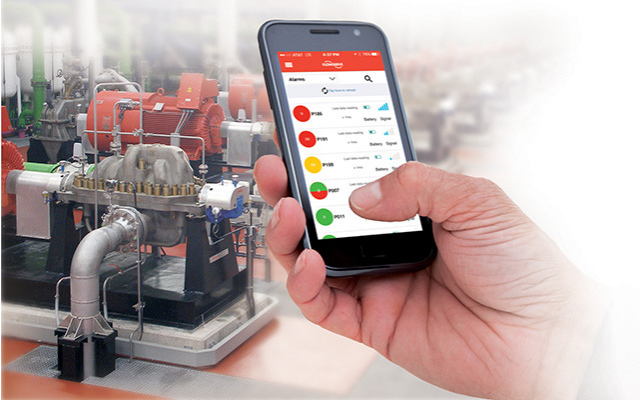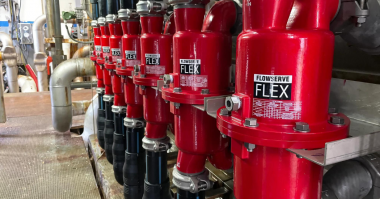The overall cost of a pump repair can be expensive, especially when sophisticated sealing devices or sealless technology are utilized. When a process pump fails, plant personnel can be put at risk and unscheduled downtime, while always costly, can be particularly burdensome in critical services. For these reasons, monitoring process pumps to prevent failures has become increasingly commonplace. Among the most comprehensive of these monitoring methods is power monitoring.
Determining Power
Pump power can be monitored by measuring electrical motor power, or by using electro-mechanical means such as in-line torque meters, instrumented shafts, and dynamometers. Measurement of electrical power is generally more practical and less costly than other methods, since no pump installation modifications are necessary.
Most industrial service, motor-driven pumps are powered by three-phase alternating current (a.c.) induction motors. The electrical power delivered to these motors can be calculated by using the motor voltage, current and power factor measurements from power transducers. With these devices, power can be calculated as:
Power = Volts x Current x Power Factor x √3 (Watts)
Power = Volts x Current x Power Factor x √3 745.7
(hp)
Real Power and the Power Factor
In a.c. induction motors, not all of the power delivered to the motor is available as real power (P) for conversion to mechanical rotation of the motor shaft. The inductive characteristics of these motors make them what is known as “reactive” loads in which some of the power, reactive power (Q), is temporarily stored in electromagnetic fields and returned to the source. The combined real and reactive power is called apparent power (S), which can be calculated by multiplying the motor voltage and the current. The ratio of real to apparent power is called the “Power Factor,” which is used to determine the real power component of apparent power. The “Power Triangle” in Figure 1 illustrates the real, apparent and reactive power component relationships.
When motors convert electrical power to mechanical power, not all of the real power supplied to the motor is delivered to the shaft. The ratio of the power delivered at the output shaft to the input power delivered to the motor is called the motor efficiency. If the efficiency of the motor is known, it can be multiplied by the real power calculated in Equation 1A or 1B to determine the actual power to the shaft and pump. This is useful in determining abnormal equipment operation conditions by comparing the power to the pump with expected values (from a pump data sheet or performance curve).
Relating Power To Pump Protection
A power monitor is a fault device which tells the operator when a pump is not operating correctly. When a pump is operating at its specified operating point(s), a specific, known level of power is required. Numerous factors can cause an increase or decrease in the power required by a pump, and a sudden change in power may indicate a condition that could damage the pump or sealing device. Typical underload and overload scenarios are discussed in this section.
Low Power/Underload Conditions
Dry-Run/Starved Suction: The condition of a closed suction valve, blocked suction line, empty vessel, or vapor-bound suction can leave a pump precariously void of fluid. Dry-running may result in:
• Mechanical seal failure
•Bushing and journal failure in magnetic drive and canned motor pumps (see Figure 2)
• Sharp temperature rises in conductive containment shells





Comments